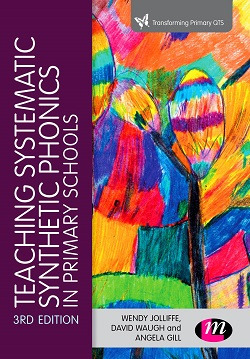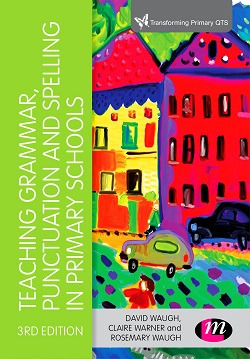You are in: Middle East
Change location
You are here
Literacy support for primary school teachers
We've put together this guide to support you in teaching phonics, spelling, punctuation and grammar in the primary school classroom!
Overcoming common challenges in teaching phonics

Grapheme and phoneme variations
A challenge for the teacher of phonics is the fact that there are so many different ways in which to give a written representation of English phonemes. Similarly, there are many graphemes that are represented by more than one phoneme.
Teachers can support children in their selection of the correct grapheme or phoneme by:
-
Teaching common rules for phoneme–grapheme variations. There are, of course, exceptions to these rules and it is important that children are made aware of this.
-
Grouping words by grapheme or phoneme type to enable children to learn several words by association and to understand common rules and spelling patterns.
-
Ensuring that the meaning of the word in question is clearly understood. If children understand whether they are being asked about the word they are more likely to be able to select the correct grapheme or phoneme.
-
Reviewing and revisiting common groups of words with phoneme–grapheme variations to ensure that children have regular and consistent reminders through a variety of games and activities.

Phonics techniques for the frustrated child
There are some children for whom these techniques will not be wholly successful and they may continue to struggle with phoneme–grapheme correspondences. These children may benefit from:
-
Discrete, daily phonics as part of a small group or on an individual basis. The well-planned use of adult support in the classroom may allow children to take part in focused group work with specific targets to meet their individual needs.
-
Using a multi-sensory approach. This will encourage children to access and practise phonics in as many different ways as possible with a wide range of interactive teaching techniques and activities.
-
Regular and consistent repetition of the key areas of challenge through revisiting and reviewing.
-
Frequent assessment that will inform the teacher of progress made and when it is appropriate to move the child on.

Parent knowledge and attitudes to phonics
Parents and carers can be a valuable support in the teaching of reading, spelling and phonics and it is in schools’ best interests to harness and guide that support. Parents and carers can be introduced to successful ways in which they can support their children with phonics through:
- Providing guidance and support at parents’ meetings and workshops.
- Leaflets, phoneme lists, letter formation guidelines and other written information that can be sent home for parents to refer to when working at home with their children.
- Invitations to visit during phonics lessons to ensure that parents have a clear picture of what is being taught and how.
- Suggestions for high-quality websites that support the teaching of phonics, particularly those that are supported by sound tracks.
Key principles for teaching grammar
The purpose for teaching grammar is not simply for you to be confident about correcting mistakes in children’s work, nor is it to pass on tricks and techniques to be replicated in a mechanistic way. This does not make children writers or lead to good writing.
Teaching grammar effectively is about enabling children to control grammar to express increasingly complex ideas. When grammar is taught well, it can make a significant different to children’s literacy development.
Here are 7 key principles to bear in mind when teaching grammar:

- Build up your own subject knowledge
To teach grammar, you need explicit as well as implicit knowledge, to be confident about using the correct terms and explaining these. - Give talk a high priority in your classroom
Children need to be able to select from a wardrobe of voices that includes Standard English. - Remember the purpose of teaching grammar
Grammar is not simply the naming of parts of speech or for teaching the rules of English. It needs to be strongly embedded in classroom talk, reading and writing. - Teach grammar in context
By introducing children to grammatical features and language in context, you will be helping them to internalise these principles. - Read aloud and discuss how authors use grammar
Children who read extensively and are read to will have a ‘toolbox’ of structures, patterns and rhythms to draw on. - Be systematic
Make sure you know what the class you are working with have already learned and what they need to learn now. Link new learning with their prior knowledge. - Make learning grammar fun
Teaching grammar can involve investigations, problem-solving and language play as part of developing children’s awareness of and interest in how language works.
Teaching spelling through supporting independence
The real ‘test’ of how well our children spell is how they apply what has been taught when they write independently. While we don’t want to hinder creativity, we have to be careful not to give the message that children don’t need to worry about spelling at all.
Here are 8 tips to help:

- Set out clear expectations before writing and remind the children of the recently taught conventions or strategies.
- Briefly recap key errors you noticed when you were marking previous work to raise the profile of spelling. Make sure they know that your marking will focus on the spelling patterns and common exception or tricky words they have already been taught.
- Remind the class that they are very unlikely to get all the other spellings right every time and that you value their attempts.
- During writing, draw attention to key errors across the class: ‘I’ve seen definitely spelt “definitely” and “definately”. Which one is right and why?
- Introduce ‘have a go’ notepads or whiteboards which provide children with the opportunity to try out their ideas using their developing knowledge and see what ‘looks right’.
- Write the initial/final sounds and draw a line to show what has been missed out.
- Encourage children to write down what they can, using a mix of their knowledge of phonics, probable letter strings and morphology.
- Write a ‘temporary’ spelling, underlining it and coming back to it at the end: some teachers call these magic lines or squiggles.
Test your spelling, punctuation and grammar knowledge
If you'd like to improve your subject knowledge for teaching spelling, punctuation and grammar, test yourself with this short quiz!

More on literacy in the primary school classroom..
All of the information on this page has been taken from the following books. Check them out for more advice and guidance on teaching literacy!

